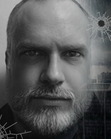The Grimm Brothers' Tweenage Sources
Contrary to public perception, the Grimm Brothers relied on a cadre of teen and preteen girls from Hessian upper-class families.
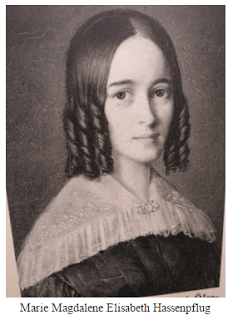 This entry is in response to those who believe that it is impossible for the tales of the Grimm Brothers to contain encrypted layers of meaning such as the instances I wrote about in my book The Gnostic Notebook: On Memory Systems and Fairy Tales.
This entry is in response to those who believe that it is impossible for the tales of the Grimm Brothers to contain encrypted layers of meaning such as the instances I wrote about in my book The Gnostic Notebook: On Memory Systems and Fairy Tales.
Basically, their criticism comes down to the unlikelihood that such a complicated system of encryption would have been integrated into the piece of folklore during its existence as a purely oral tradition, which seems highly unlikely. After all, the keys to these tales are themselves part of a literary tradition, so it seems unlikely that a tale which originated within the oral tradition would be dependent on such a written system for decryption.
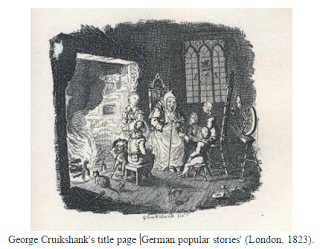 I agree completely. I see no way that these codes existed within the tales if the tales were being transmitted orally. At the same time, I clearly see evidence that the tales were encrypted with hidden layers of meaning. This would seem to indicate that those specific tales in which I identified codes never existed within oral form.
I agree completely. I see no way that these codes existed within the tales if the tales were being transmitted orally. At the same time, I clearly see evidence that the tales were encrypted with hidden layers of meaning. This would seem to indicate that those specific tales in which I identified codes never existed within oral form.
According to their notes, the brothers found The Strange Musician "from Lorsch, near Worms," which refers to the Abbey Lorsch with its famous monastic library. It seems unlikely that this tale ever existed in an oral form, but was instead part of a collection (now lost) of these sorts of tales. The Three Sluggards’ is actually from the book Schimpf und Ernst which was published in 1522 by Johannes Pauli, so another story which likely never existed in oral form.
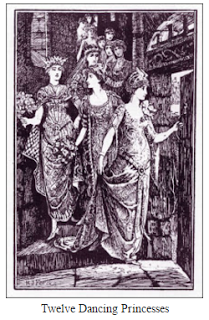 Many of the tales came from the Wild family, which Wilhelm married into, and the Hassenpflugs. Lisette Wild b. 1782, 28 years old in 1810, was responsible for so many of Charles Perrault’s stories finding their way into the Grimm canon. The Twelve Dancing Princesses came from Jenny von Droste zu Hülshoff b.1795, 15 years old in 1810. She apparently engaged in a long an unconsummated love affair with Wilhelm. The Golden Key was contributed by Marie Hassenpflug b.1788, 22 years old in 1810. It seems likely that many of these stories were crafted by the girls themselves in an attempt to outdo one another as they vied for the attention of the brothers.
Many of the tales came from the Wild family, which Wilhelm married into, and the Hassenpflugs. Lisette Wild b. 1782, 28 years old in 1810, was responsible for so many of Charles Perrault’s stories finding their way into the Grimm canon. The Twelve Dancing Princesses came from Jenny von Droste zu Hülshoff b.1795, 15 years old in 1810. She apparently engaged in a long an unconsummated love affair with Wilhelm. The Golden Key was contributed by Marie Hassenpflug b.1788, 22 years old in 1810. It seems likely that many of these stories were crafted by the girls themselves in an attempt to outdo one another as they vied for the attention of the brothers.
So, to review, of the four stories I presented in Volume One, The Strange Musician likely came from a monastic library, The Golden Key came from Marie Hassenpflug, The Three Sluggards from Johannes Pauli and The Twelve Dancing Princesses from Jenny von Droste zu Hülshoff, where perhaps we should see Wilhelm as the old wounded soldier and the twelve sisters as all the various available young aristocratic Wilds and Hassenpflugs.
I’d say that none of these tales originated in the oral tradition. Rather they were all composed as literature. The Strange Musician and The Three Sluggards came from monastic writers while The Twelve Dancing Princesses and The Golden Key were written by young ladies looking to impress the Grimm brothers, who were naïve enough to believe that the fairy tales they were concocting were actually folktales that the girls had heard as children.
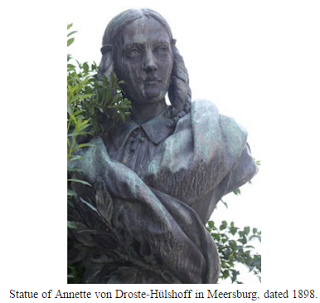 Anna von Droste Hulshoff was ten years old when she met Wilhelm and he claimed that she knew more tales than anyone he had ever met. However he found her “pushy and unpleasant” and “she wanted to radiate her brilliance constantly and jumped from one topic to the next, but she truly promised to copy everything down that she knows and send it.” According to
Clever Maids: The Secret History of the Grimm Fairy Tales
by Valerie Paradiz, though he was nine years her senior, “Wilhelm fell into an immature competition with her, afraid as he was of her wild intellect.” He even wrote of the nightmares he had of her, “[she was] cloaked completely in a dark purple flame and, one after another, pulled single hairs [from her head], flinging them at me through the air.” He added that the hairs “transformed themselves into arrows” which ”could have easily made me blind.” She was born two months premature, was nearly blind and was a near child prodigy in Music, Latin, Literature and the Natural Sciences.
Anna von Droste Hulshoff was ten years old when she met Wilhelm and he claimed that she knew more tales than anyone he had ever met. However he found her “pushy and unpleasant” and “she wanted to radiate her brilliance constantly and jumped from one topic to the next, but she truly promised to copy everything down that she knows and send it.” According to
Clever Maids: The Secret History of the Grimm Fairy Tales
by Valerie Paradiz, though he was nine years her senior, “Wilhelm fell into an immature competition with her, afraid as he was of her wild intellect.” He even wrote of the nightmares he had of her, “[she was] cloaked completely in a dark purple flame and, one after another, pulled single hairs [from her head], flinging them at me through the air.” He added that the hairs “transformed themselves into arrows” which ”could have easily made me blind.” She was born two months premature, was nearly blind and was a near child prodigy in Music, Latin, Literature and the Natural Sciences.
A willful precocious little genius who at ten years of age knew more tales than anyone Wilhelm had ever met. Is it completely beyond all reason to suggest that she may have slipped in a creation of her own among the many she had learned during her years as a child?
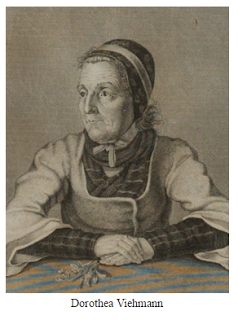 There are many other tales that come from actual oral storytellers such as Dorothea Viehmann whose work shows no evidence of encryption. I am not concerned with those tales, but only this very specific subset. I see these texts solely as literary pieces because the complexity of the encryption systems demands that the stories be in written form, much like Bach could not have crafted his self-referential compositions solely in his head. Something that complex needs to be written down.
There are many other tales that come from actual oral storytellers such as Dorothea Viehmann whose work shows no evidence of encryption. I am not concerned with those tales, but only this very specific subset. I see these texts solely as literary pieces because the complexity of the encryption systems demands that the stories be in written form, much like Bach could not have crafted his self-referential compositions solely in his head. Something that complex needs to be written down.
If we accept the common view of how the brothers collected these tales then there is that difficulty. However if the girls who contributed these stories modified some pieces of folklore or created stories completely, then there is no problem. Or if we assume that Wilhelm modified the stories before putting them into print as he was known to have edited and to have inserted psychological and mythical motifs into the tales himself.
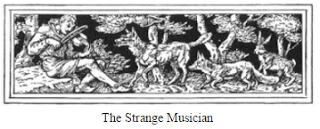 My personal view is that while Wilhelm was in communication with Jenny von Droste Hulshoff during their years-long romance, he revealed the hidden reading he had discovered in The Strange Musician. This, in turn, inspired her to craft a fairy tale around the I Ching based on the idea of a wounded soldier selecting his bride from twelve sisters. The tale was secretly a gift, a token of their unfulfilled romance. I do not need to point out the fascination young ladies have with encoded communication, consider pig Latin.
My personal view is that while Wilhelm was in communication with Jenny von Droste Hulshoff during their years-long romance, he revealed the hidden reading he had discovered in The Strange Musician. This, in turn, inspired her to craft a fairy tale around the I Ching based on the idea of a wounded soldier selecting his bride from twelve sisters. The tale was secretly a gift, a token of their unfulfilled romance. I do not need to point out the fascination young ladies have with encoded communication, consider pig Latin.
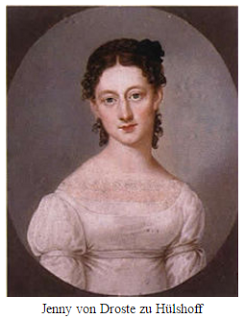 Also, it all seems rather incestuous. The brothers had no objectivity. Wilhelm was romancing the contributors, and we are supposed to trust his judgment concerning the accuracy of their reports? It isn’t that the brothers failed to control against the collection of fraudulent data, but rather that never even conceived of the need to do so.
Also, it all seems rather incestuous. The brothers had no objectivity. Wilhelm was romancing the contributors, and we are supposed to trust his judgment concerning the accuracy of their reports? It isn’t that the brothers failed to control against the collection of fraudulent data, but rather that never even conceived of the need to do so.
At the same time, I can easily argue against my position by pointing out the obvious as I have already done in Volume One. No sign of Gurdjieff’s triads existing before Gurdjieff and the I Ching wasn’t known Europe when The Three Sluggards was originally published. And regardless of all, I have written above about the brothers’ research methods, I am really not all that interested exploring the matter further, especially when my present solution is to assume that a teenage girl with a crush wrote The Twelve Dancing Princesses. I prefer shifting mists and deluded entrancement to the tawdry adolescent romance my solution demands.
 This entry is in response to those who believe that it is impossible for the tales of the Grimm Brothers to contain encrypted layers of meaning such as the instances I wrote about in my book The Gnostic Notebook: On Memory Systems and Fairy Tales.
This entry is in response to those who believe that it is impossible for the tales of the Grimm Brothers to contain encrypted layers of meaning such as the instances I wrote about in my book The Gnostic Notebook: On Memory Systems and Fairy Tales.Basically, their criticism comes down to the unlikelihood that such a complicated system of encryption would have been integrated into the piece of folklore during its existence as a purely oral tradition, which seems highly unlikely. After all, the keys to these tales are themselves part of a literary tradition, so it seems unlikely that a tale which originated within the oral tradition would be dependent on such a written system for decryption.
 I agree completely. I see no way that these codes existed within the tales if the tales were being transmitted orally. At the same time, I clearly see evidence that the tales were encrypted with hidden layers of meaning. This would seem to indicate that those specific tales in which I identified codes never existed within oral form.
I agree completely. I see no way that these codes existed within the tales if the tales were being transmitted orally. At the same time, I clearly see evidence that the tales were encrypted with hidden layers of meaning. This would seem to indicate that those specific tales in which I identified codes never existed within oral form. According to their notes, the brothers found The Strange Musician "from Lorsch, near Worms," which refers to the Abbey Lorsch with its famous monastic library. It seems unlikely that this tale ever existed in an oral form, but was instead part of a collection (now lost) of these sorts of tales. The Three Sluggards’ is actually from the book Schimpf und Ernst which was published in 1522 by Johannes Pauli, so another story which likely never existed in oral form.
 Many of the tales came from the Wild family, which Wilhelm married into, and the Hassenpflugs. Lisette Wild b. 1782, 28 years old in 1810, was responsible for so many of Charles Perrault’s stories finding their way into the Grimm canon. The Twelve Dancing Princesses came from Jenny von Droste zu Hülshoff b.1795, 15 years old in 1810. She apparently engaged in a long an unconsummated love affair with Wilhelm. The Golden Key was contributed by Marie Hassenpflug b.1788, 22 years old in 1810. It seems likely that many of these stories were crafted by the girls themselves in an attempt to outdo one another as they vied for the attention of the brothers.
Many of the tales came from the Wild family, which Wilhelm married into, and the Hassenpflugs. Lisette Wild b. 1782, 28 years old in 1810, was responsible for so many of Charles Perrault’s stories finding their way into the Grimm canon. The Twelve Dancing Princesses came from Jenny von Droste zu Hülshoff b.1795, 15 years old in 1810. She apparently engaged in a long an unconsummated love affair with Wilhelm. The Golden Key was contributed by Marie Hassenpflug b.1788, 22 years old in 1810. It seems likely that many of these stories were crafted by the girls themselves in an attempt to outdo one another as they vied for the attention of the brothers. So, to review, of the four stories I presented in Volume One, The Strange Musician likely came from a monastic library, The Golden Key came from Marie Hassenpflug, The Three Sluggards from Johannes Pauli and The Twelve Dancing Princesses from Jenny von Droste zu Hülshoff, where perhaps we should see Wilhelm as the old wounded soldier and the twelve sisters as all the various available young aristocratic Wilds and Hassenpflugs.
I’d say that none of these tales originated in the oral tradition. Rather they were all composed as literature. The Strange Musician and The Three Sluggards came from monastic writers while The Twelve Dancing Princesses and The Golden Key were written by young ladies looking to impress the Grimm brothers, who were naïve enough to believe that the fairy tales they were concocting were actually folktales that the girls had heard as children.
 Anna von Droste Hulshoff was ten years old when she met Wilhelm and he claimed that she knew more tales than anyone he had ever met. However he found her “pushy and unpleasant” and “she wanted to radiate her brilliance constantly and jumped from one topic to the next, but she truly promised to copy everything down that she knows and send it.” According to
Clever Maids: The Secret History of the Grimm Fairy Tales
by Valerie Paradiz, though he was nine years her senior, “Wilhelm fell into an immature competition with her, afraid as he was of her wild intellect.” He even wrote of the nightmares he had of her, “[she was] cloaked completely in a dark purple flame and, one after another, pulled single hairs [from her head], flinging them at me through the air.” He added that the hairs “transformed themselves into arrows” which ”could have easily made me blind.” She was born two months premature, was nearly blind and was a near child prodigy in Music, Latin, Literature and the Natural Sciences.
Anna von Droste Hulshoff was ten years old when she met Wilhelm and he claimed that she knew more tales than anyone he had ever met. However he found her “pushy and unpleasant” and “she wanted to radiate her brilliance constantly and jumped from one topic to the next, but she truly promised to copy everything down that she knows and send it.” According to
Clever Maids: The Secret History of the Grimm Fairy Tales
by Valerie Paradiz, though he was nine years her senior, “Wilhelm fell into an immature competition with her, afraid as he was of her wild intellect.” He even wrote of the nightmares he had of her, “[she was] cloaked completely in a dark purple flame and, one after another, pulled single hairs [from her head], flinging them at me through the air.” He added that the hairs “transformed themselves into arrows” which ”could have easily made me blind.” She was born two months premature, was nearly blind and was a near child prodigy in Music, Latin, Literature and the Natural Sciences.A willful precocious little genius who at ten years of age knew more tales than anyone Wilhelm had ever met. Is it completely beyond all reason to suggest that she may have slipped in a creation of her own among the many she had learned during her years as a child?
 There are many other tales that come from actual oral storytellers such as Dorothea Viehmann whose work shows no evidence of encryption. I am not concerned with those tales, but only this very specific subset. I see these texts solely as literary pieces because the complexity of the encryption systems demands that the stories be in written form, much like Bach could not have crafted his self-referential compositions solely in his head. Something that complex needs to be written down.
There are many other tales that come from actual oral storytellers such as Dorothea Viehmann whose work shows no evidence of encryption. I am not concerned with those tales, but only this very specific subset. I see these texts solely as literary pieces because the complexity of the encryption systems demands that the stories be in written form, much like Bach could not have crafted his self-referential compositions solely in his head. Something that complex needs to be written down.If we accept the common view of how the brothers collected these tales then there is that difficulty. However if the girls who contributed these stories modified some pieces of folklore or created stories completely, then there is no problem. Or if we assume that Wilhelm modified the stories before putting them into print as he was known to have edited and to have inserted psychological and mythical motifs into the tales himself.
 My personal view is that while Wilhelm was in communication with Jenny von Droste Hulshoff during their years-long romance, he revealed the hidden reading he had discovered in The Strange Musician. This, in turn, inspired her to craft a fairy tale around the I Ching based on the idea of a wounded soldier selecting his bride from twelve sisters. The tale was secretly a gift, a token of their unfulfilled romance. I do not need to point out the fascination young ladies have with encoded communication, consider pig Latin.
My personal view is that while Wilhelm was in communication with Jenny von Droste Hulshoff during their years-long romance, he revealed the hidden reading he had discovered in The Strange Musician. This, in turn, inspired her to craft a fairy tale around the I Ching based on the idea of a wounded soldier selecting his bride from twelve sisters. The tale was secretly a gift, a token of their unfulfilled romance. I do not need to point out the fascination young ladies have with encoded communication, consider pig Latin. Also, it all seems rather incestuous. The brothers had no objectivity. Wilhelm was romancing the contributors, and we are supposed to trust his judgment concerning the accuracy of their reports? It isn’t that the brothers failed to control against the collection of fraudulent data, but rather that never even conceived of the need to do so.
Also, it all seems rather incestuous. The brothers had no objectivity. Wilhelm was romancing the contributors, and we are supposed to trust his judgment concerning the accuracy of their reports? It isn’t that the brothers failed to control against the collection of fraudulent data, but rather that never even conceived of the need to do so.At the same time, I can easily argue against my position by pointing out the obvious as I have already done in Volume One. No sign of Gurdjieff’s triads existing before Gurdjieff and the I Ching wasn’t known Europe when The Three Sluggards was originally published. And regardless of all, I have written above about the brothers’ research methods, I am really not all that interested exploring the matter further, especially when my present solution is to assume that a teenage girl with a crush wrote The Twelve Dancing Princesses. I prefer shifting mists and deluded entrancement to the tawdry adolescent romance my solution demands.
Published on July 10, 2016 18:32
No comments have been added yet.

